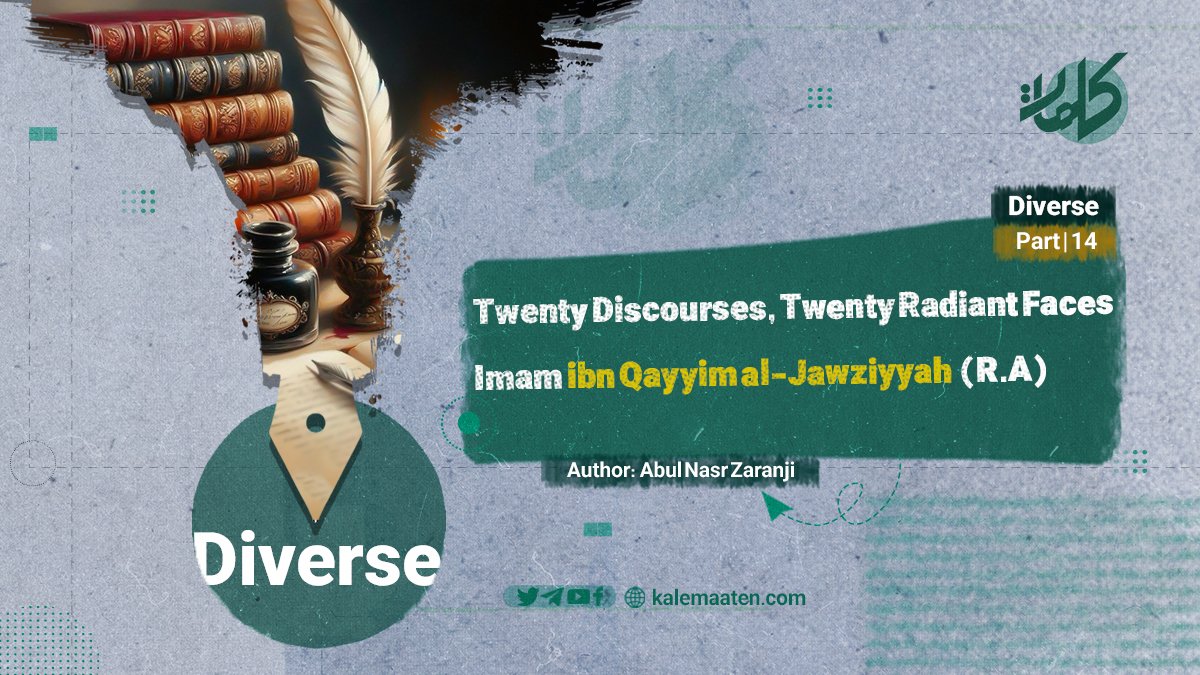
Author: Abdul Hameed Nowrozi
Twenty Discourses, Twenty Radiant Faces (Part 14)
The Students of ibn Qayyim
The gatherings of Ibn Qayyim were filled with students who, with great enthusiasm and a deep intention to serve knowledge, sat before a teacher who was a beacon of wisdom. Each student was like a flower in the garden of learning and knowledge. Among these students, the following stand out:
1. Abu al-Fida Imad al-Din Ibn Kasir al-Dimashqi
2. Burhan al-Din Ibrahim bin Shams al-Din Ibn Qayyim al-Jawziyyah (his son, a scholar in grammar and an accomplished jurist)
3. Sharaf al-Din and Jamal al-Din Abdullah bin Shams al-Din Muhammad Ibn Qayyim al-Jawziyyah
(another son of his)
4. Ibn Rajab al-Hanbali (Abdulrahman Zayn al-Din Abu al-Faraj bin Ahmad, famously known as Ibn Rajab al-Hanbali, died in 795 AH)
5. Ibn Abdul-Hadi (Muhammad Shams al-Din Abu Abdullah bin Ahmad bin Abdul-Hadi bin Qudamah al-Maqdisi al-Hanbali, a renowned hadith scholar and critic)
The Works and Activities of Allama Ibn Qayyim al-Jawziyyah
The connection between the scholarly and practical life of Ibn Qayyim was like the relationship between the soul and the body. His actions were never detached from the sphere of knowledge and service to it, which he sustained through teaching, reading, lecturing, and writing. His contributions, as noted in biographies about him, can be categorized into four main areas:
1. Leadership at the Jawziyyah School
His student, Ibn Kasir, said about him: “He was the leader of the Jawziyyah School and the son of its caretaker.” Details about the school were previously discussed.
2. Teaching
The teaching of Ibn Qayyim reflected his vast knowledge, intellectual maturity, and superiority in understanding. Many great scholars and prominent figures in Islamic scholarship, such as the hadith master Ibn Rajab al-Hanbali, the skilled hadith scholar al-Zahabi, and the celebrated Mufasir, jurist, and hadith scholar Ibn Kasir, benefited from his teachings.
3. Issuing Religious Verdicts (Fatwas)
Ibn Qayyim issued fatwas solely for the sake of Allah, without any worldly motives or pursuit of position. He dedicated his life to this cause and was often imprisoned for his verdicts. His student, Imam al-Dhahabi, remarked:
“Ibn Qayyim was among the greatest companions of Ibn Taymiyyah. He issued fatwas, taught, debated, and authored numerous books to share the ocean of his knowledge with others.”
4. Authorship
Ibn Qayyim (may Allah have mercy on him) has many writings, and Zarkali states in his book “Al-Alam” that he has written one thousand books. Among these writings, the following can be mentioned:
1. Zadal-e-Misir fi ‘Ilm al-Tafsir (Damascus, Al-Muktab al-Islami, in nine parts)
2. Al-Mawza’at min al-Ahadith al-Marfu’at (Madinah, Al-Muktab al-Salafiya)
3. Al-Muntazem fi Tarikh al-Muluk wa al-Umm (Hyderabad, 1357 AH)
4. Al-Safwat al-Safwat in the circumstances of asceticism and mysticism (Hyderabad, 1355 AH)
5. Dhimm al-Hawa’ (Dar al-Kuttab al-Hadith, Maktaba al-Sa’ada, 1962 AD)
6. Manaqib al-Baghdadi (Baghdadi, 1342 AH)
7. Maqnaib al-Umar ibn Abdul-Aziz (Cairo, 1331 AH)
8. Al-Azkiyya and their news (Beirut, 1966 AD)
9. Akhbar al-Hamqi and al-Mughafflin (Beirut, Maktaba al-Ghazali)
10. Maqnaib Ahmad ibn Hanbal (Egypt, 1949 AD)
11. Maqnaib Omar ibn al-Khattab (Egypt, 1924 AD)
12. Al-Hasan al-Basri: His Biography and Views (Egypt, 1350 AD)
13. Ruh al-Arwah (1309 AD)
14. Kitab al-Qisas wa al-Muzkirin (published by Marlin Swartz and Qasim al-Samarai)
Historians have noted that no one in Syria could match his skill in writing, calligraphy, and composition of books.
Continues…


